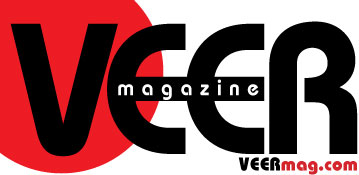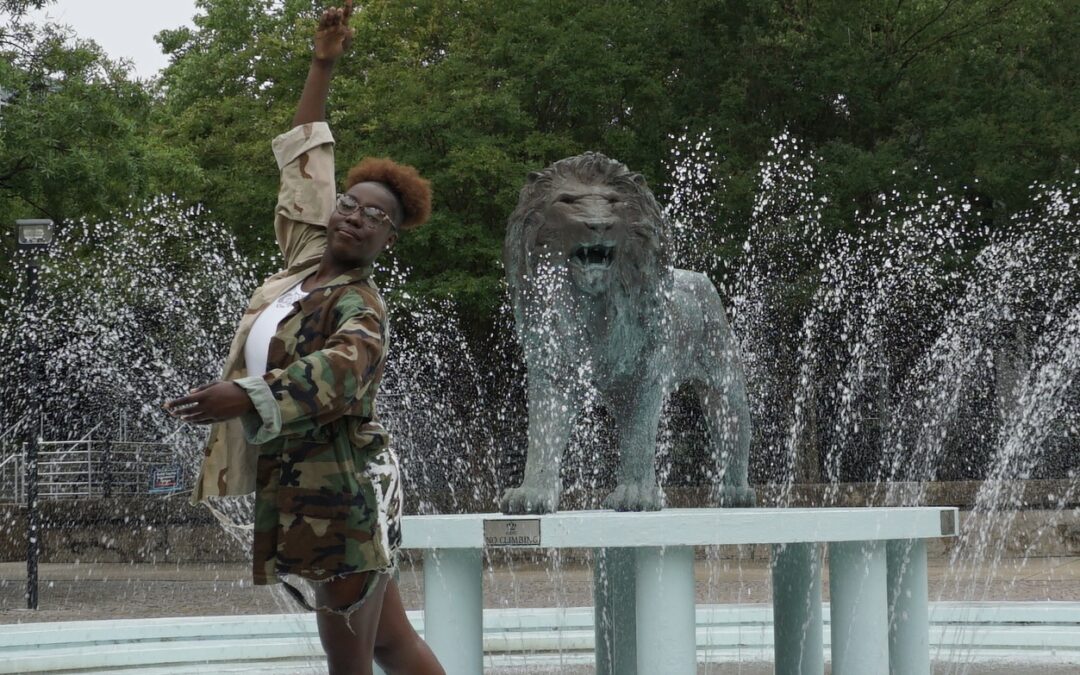(Tianna Reed will present three pieces of choreography, all performed by ODU classmates, in the winter showcase. Photo by Lauren Sinclair.)
By Kate Mattingly
Being an artist requires a ton of hard work, and few artists work harder than dancers. It’s the only art form where the human body is the vehicle of creativity and communication. Hampton Roads is home to a wealth of wonderful schools and professional dancers who perform regularly. This month there’s a dance concert that contributes to cancer research, and Ballet Virginia presents Coppélia at the Sandler Center in March.
Having been a dancer and now teacher for the last four decades, I have witnessed thousands of incredible performances and seen choreography that moves people to tears, brings joy, and affirms what it means to be human. As a faculty member in a Department of Communication and Theatre Arts I’m always surprised when tenured colleagues say, somewhat proudly, “I know nothing about dance,” as if embodied communication is not a daily part of everyone’s lives. Some people perceive their bodies as little more than a carrier for their brains.
In reality, our bodies are paths to healing, to joy, to pleasure, and to self-knowledge. Dancers’ embodied awareness enriches their self-presentation, as well as their coordination, flexibility, and longevity. Nevertheless, in spite of the grueling hours of training and rehearsing, many professional dancers are under-paid and under-valued. Local teachers are reversing these trends by illuminating the healing, illuminating, and transformative powers of both dancing and dance performances.
On February 25, Music in Motion Dance Studio hosts a winter showcase at Norfolk Collegiate that will present a spectrum of emotions, plus proceeds will be donated to cancer research. Located in Virginia Beach, Music in Motion is led by Lauren Kelly, who took over from her mother in 2016. Teachers are dedicated to building students’ self-expression, creativity, and confidence. Classes are offered for a range of ages: from 1-and-a-half-year-olds to adults.
Tianna Reed, a faculty member at Music in Motion, teaches dancers aged 4 to 11 in a variety of styles: tumbling, ballet, and tap for the 4 to 6-year-olds; tap and jazz for the 9 to 11-year-olds. She is also a student herself, completing her final year of studies at Old Dominion University where she is majoring in Dance. About a year ago, in her junior year at ODU, Tianna found a love of choreography, thanks in part to a Composition course taught by James Morrow. “I remember my first year at ODU, I was thinking I’m never going to choreograph. I just want to be in other people’s pieces,” says Tianna. “Well, that has switched tremendously. I want to choreograph a lot!”
Tianna will present three pieces of choreography, all performed by ODU classmates, in the winter showcase. There’s a group piece called “Internal Conflicts,” inspired by the vicissitudes of emotions that cancer patients, and families of cancer patients, experience. There’s also a duet performed by Atiya Wiggins and Miles King, about a married couple and the exhaustion of cancer, especially caring for a husband dying of cancer. The third piece is a more upbeat quartet, set to a song by Christión called “Full of Smoke,” that shows the moments of joy and gratitude people experience, even when living with cancer.
If the themes in Tianna’s choreography sound poignant, there’s good reason: for a decade, Tianna has performed in her church, Calvary Revival Church. She is deeply knowledgeable about the transformative powers of dancing. Cultures around the world have integrated dancing into rituals and healing practices, and movement therapies today are sought-after by many patients, including people with Parkinson’s.
Tianna savors the “connection of movement and emotion” that dancing offers. Its impact is immediate and felt viscerally, sensorially, so long as audiences are open to the possibilities of embodied communication. She also relishes collaboration with the dancers and with Marcus White, a local artist who recorded a spoken word poem Tianna wrote that will be heard at the beginning of the group piece, “Internal Conflicts.”
Even the young dancers in her classes, 4 to 11-year-olds, inspire Tianna to think about choreography. “They are so creative, so full of energy, and move in such unpredictable ways,” she says. The winter showcase offers students and Hampton Roads audiences an opportunity to see choreography that’s different from competition dance and benefits an important cause: finding a cure for cancer. Other performers in the showcase include the Twinkle Toes Performing Arts Company, directed by Elizabeth Zamer, and Music in Motion Dance Company.
In March, another local school, Ballet Virginia, is presenting a narrative ballet, Coppélia. Ballet Virginia celebrates its 15th anniversary this year and its professional company was established in 2019. Coppélia will be performed by the professionals and almost 100 locally grown dancers.
“Coppélia is one of our favorite ballets,” say Janina Michalski and Suzanne Lownsbury, co-directors of Ballet Virginia Academy. In late January, I met them in their office on 21st Street in Norfolk. They are so accustomed to working collaboratively they often finish one another’s sentences.
“Coppélia is just a really entertaining ballet,” Suzanne continues. “I know that the Virginia Arts Festival brought in Birmingham Royal Ballet nine years ago, and they did Coppélia, so people here may be familiar with it.”
Even if audiences are not, this is a ballet for anyone: it’s a story about love and attraction, suspense and mystery, plus shenanigans and humor. It was first presented in France in 1870 and has been revised by many choreographers, including Willam Christensen in 1939 and Jean-Christophe Maillot in 2019. Suzanne adds, “I danced Swanhilda when I was with Cleveland Ballet and it’s a fun role.” Together she and Janina choreographed this version.
Ballet Virginia distinguishes itself from other schools with its emphasis on ballet training, not competition dance. Students can enroll beginning at age 18 months and there are classes available for every age, including professional dancers and adult beginners. When some of the professional dancers are not in rehearsals or performing (their contracts are for 29 weeks a year), they teach classes for the academy, sharing their wisdom with future generations.
Asked what makes their training unique, the directors answer, “We train dancers to become professionals, and we’ve got a liaison with CHKD so that when a dancer appears ready for pointe work, we give them the proper screenings to make sure they are anatomically ready. And we offer so many performing opportunities!” Through a partnership with the Sandler Center––Ballet Virginia is their “resident company”––they present their annual Nutcracker and a story-ballet at this venue every year.
The directors are realistic about the challenges of a dance career––“about 1% of the children who come through the door will become professional dancers”––but they see the benefits of ballet as endless: students learn discipline, dedication, and time management.
“We started in 2008 with 80 students and now 2023 we’ve got over 460. We have expanded to two studios, one in Virginia Beach, and one here in Norfolk.” The annual budget of the company and school is about one million dollars, and as a non-profit entity, their income matches their expenses. Classes in Norfolk take place in a spacious building (a former car dealership) that has five studios plus storage areas for costumes and props, and lounges for dancers.
Being a dancer, a teacher, or a director is tough: costs of space and training are high, and audiences for dance can be scarce. Janina and Suzanne have noticed that the Hampton Roads communities tend to be transient because there are quite a few military families living here.
In spite of challenges, these local dancers, directors, and teachers show us why this art form continues to attract students and audiences: dancing taps into our creativity and imagination, taking us out of predictable patterns, and away from our screens and devices. But dance is still so misunderstood that when Veer awarded the best dance shows of 2022, the editor chose the shows and admitted he had not attended any local dance events that year.
Watching a choreographer communicate a feeling or story through human shapes and phrases deepens awareness of our bodies and feelings. Perhaps this is why dance audiences are scarce compared to those for music, visual arts, and theater: dancing asks us to engage with other people, not sounds or paintings or words. In these days of extreme individualism and inexplicable violence, human connection is in scarce supply. And it’s one thing that benefits us all.
WANT TO GO?
From the Inside Out
Music in Motion Dance Company
February 25 at 6:00pm
Norfolk Collegiate
https://www.eventbrite.com/e/from-the-inside-out-tickets-461403067997
Coppélia
Ballet Virginia
March 11 at 2pm and 7:30pm
Sandler Center for the Performing Arts




